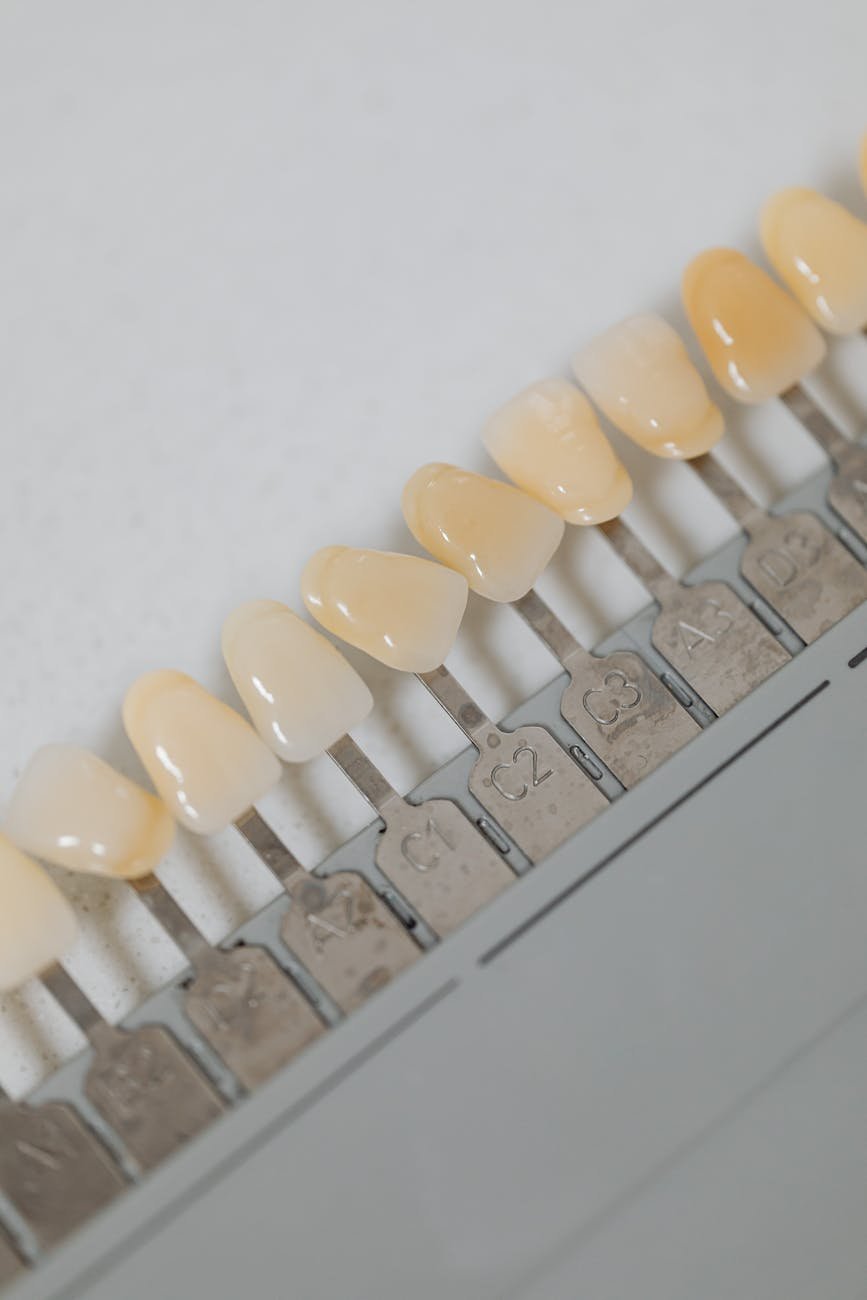Dental Implants vs. Dental Bridges
It’s good to know the scoop on dental implants and dental bridges when considering replacing those missing teeth for the long haul. Each has its perks and quirks, so let’s break it down.
Long-Term Tooth Replacement
Dental implants are like the MVPs of tooth replacement. With the right TLC, they can last a lifetime, making them a smart choice for your wallet over time (Cleveland Clinic). On the flip side, dental bridges might need a little TLC every 5 to 10 years, which can be a hassle and hit the budget (Dental Depot DFW).
| Replacement Option | Average Lifespan | Maintenance |
|---|---|---|
| Dental Implants | Lifetime | Regular dental care |
| Dental Bridges | 5-10 years | Periodic repair/replacement |
Benefits of Dental Implants
Dental implants have some pretty sweet advantages over bridges, making them a go-to for folks who want to keep their smiles in tip-top shape.
- Natural Look and Feel: Implants are the next best thing to your teeth. They look and feel like the real deal, boosting your smile and comfort level.
- Improved Chewing Function: With implants, you can chow down on your favorite grub without any fuss, which can really improve your quality of life.
- Jaw Bone Preservation: Implants are like a gym membership for your jawbone. They keep it strong and healthy by stopping bone loss after a tooth goes MIA (Healthline).
- Stability of Adjacent Teeth: Implants keep the neighbors in line, preventing nearby teeth from wandering into the space. This helps keep your bite and chew in check.
- Long-Term Cost Efficiency: Implants might cost more upfront, but they’re built to last. This means fewer trips to the dentist for repairs, saving you money in the long run (Dental Depot DFW).
For more on what implants might set you back, check out our article on dental implant cost.
Knowing the upsides and durability of dental implants can help you make the best choice for your smile. For a closer look at how bridges stack up against implants, swing by our article on dental bridge vs implant.
Success and Risks of Dental Implants
Dental implants are a go-to for folks looking to replace missing teeth, thanks to their impressive track record and how they blend right in with your natural smile. But, like any medical procedure, they come with their own set of risks and hiccups.
High Success Rate
Dental implants have a solid success rate, making them a dependable choice for replacing teeth. Studies show that about 95% of implants work well over the long haul. Plus, nearly 97% of these implants last at least a decade, and good oral care can last even longer.
| Success Rate | Duration |
|---|---|
| 95% | Long-term |
| 97% | At least 10 years |
These implants are crafted to mimic the look and feel of real teeth, giving folks the freedom to smile, munch, and chat without a second thought. They fit comfortably and look natural, often outperforming other tooth replacement options, especially for those in good health.
Potential Complications
While most dental implants work out just fine, there are a few bumps in the road to watch out for. Sometimes, the bone doesn’t quite bond with the metal implant as it should. Things like smoking can up the chances of implant issues. If the bone and implant don’t get along, the implant might need to be taken out, and you can give it another shot after a few months.
| Potential Complications | Description |
|---|---|
| Bone Fusion Failure | Bone might not bond well with the implant |
| Smoking | Raises the risk of implant trouble |
| Implant Removal | Might be needed if bonding fails |
Chatting with your dentist about these risks and thinking about your health and lifestyle is a good idea. For more details on what dental implants might cost and how to pay for them, check out our page on dental implants cost.
By getting the scoop on success rates and possible snags, folks can make smart choices about replacing their teeth. If you’re weighing your options, comparing dental bridges and implants can help you determine what’s best for you.
Dental Implant Procedure
Steps of Implant Surgery
Getting a dental implant is like building a house for your tooth. It’s a step-by-step process to ensure your new tooth is as sturdy as the real deal. Here’s how it goes down:
- Initial Consultation and Planning: First, the dentist examines your mouth, takes some X-rays, and determines the best game plan for you. This is where they decide if you’re ready to join the dental implant club.
- Tooth Removal: If you have a tooth that’s past its prime, it needs to go. This clears the way for your shiny new implant.
- Jaw Preparation (Bone Grafting, if needed): Sometimes, your jaw needs extra oomph. If it’s not strong enough, bone grafting steps in to beef it up. They might use bone from you, a donor, or even synthetic stuff (Mayo Clinic).
- Implant Placement: Now, the dentist gets down to business. They pop a metal post into your jawbone, which acts like the root of your new tooth. This involves a bit of gum cutting and drilling, but it’s all part of the plan.
- Osseointegration: This is the waiting game. Your bone needs time to cozy up to the implant, ensuring it’s snug and secure. This can take a few months, but it’s worth the wait.
- Abutment Placement: Once the implant is settled, it’s time to attach it. This little piece connects the implant to your new tooth. Sometimes, the dentist has to do a quick surgery to get it in place.
- Artificial Tooth Placement: Finally, the crown jewel—literally. A custom-made tooth is attached to the abutment, designed to blend in with your other teeth. It’s like it was always meant to be there.
| Step | Description |
|---|---|
| Initial Consultation | Evaluation and treatment planning |
| Tooth Removal | Extraction of damaged tooth |
| Jaw Preparation | Bone grafting if needed |
| Implant Placement | Surgical insertion of the implant |
| Osseointegration | Bone growth around the implant |
| Abutment Placement | Attachment of the connector |
| Artificial Tooth Placement | Custom-made crown attachment |
Bone Grafting Considerations
Bone grafting is the secret weapon for folks whose jawbones need extra support for an implant. Here’s the scoop:
- Types of Bone Grafts: Bone grafts can be obtained from different sources: your bone (autograft), a donor (allograft), an animal (xenograft), or synthetic materials (alloplastic).
- Procedure: The dentist cuts your gum to access the bone, places the graft material, and secures it. Then, they stitch you up and let the healing begin.
- Healing Time: After grafting, you must chill before the implant can go in. This gives the graft time to mesh with your bone, setting the stage for a strong implant. It might take a few months, but patience pays off.
- Success Rate: Bone grafting is a tried-and-true method with a high success rate. It’s a common fix for those with less-than-ideal bone density, boosting the odds of a successful implant.
For more info on what dental implants might cost you, check out our article on dental implants cost. If you’re weighing your options, see how a dental bridge vs implant stacks up, and peek at the dental bridge cost.
Cost of Dental Implants
Are you thinking about getting dental implants? It’s a big decision, and knowing the cost is a huge part of it. A bunch of things can change the price, but don’t worry—there are ways to make it more affordable with insurance and payment plans.
Factors Affecting Cost
Dental implants can cost anywhere from $3,000 to $7,000 for just one tooth. This price tag includes the post, abutment, and crown (GoodRx). Here’s what can make the price go up or down:
- Where You Live: Prices change depending on where you are. Big city? Probably more expensive.
- Dentist’s Know-How: A dentist with lots of experience might charge more.
- How Many You Need: More implants mean more money.
- Where in Your Mouth: Different spots can cost different amounts.
- Type of Implant: The kind of implant and what it’s made of can change the price.
- How Tricky It Is: It’ll cost more if you need extra stuff like bone grafts.
- Extra Stuff: Things like X-rays, anesthesia, and specialist visits add to the bill.
| Factor | Impact on Cost |
|---|---|
| Where You Live | Changes by area |
| Dentist’s Know-How | More experience, more cost |
| How Many You Need | More implants, more money |
| Where in Your Mouth | Different spots, different costs |
| Type of Implant | Material affects price |
| How Tricky It Is | More complex, more expensive |
| Extra Stuff | Adds to the total |
Want to see how implants stack up against bridges? Check out our article on dental bridge vs implant.
Insurance Coverage and Financing
Most dental insurance plans will help with some implant costs, but not all. It’s wise to talk to your insurance company to see what’s covered. Sometimes, they’ll pay for the crown but not the surgery part.
If insurance isn’t enough, there are other ways to pay for implants:
- Care Credit: This is like a credit card for healthcare, letting you pay over time.
- Lending Club: Offers plans with flexible payments.
For more details on costs and payment options, visit our page on dental implants cost.
By knowing what affects the cost and looking into insurance and payment plans, you can choose your dental care smartly. If you’re thinking about other options, check out our articles on dental bridge cost and all on 4 dental implant prices for more info.
Dental Implants for Oral Health
Dental implants are like superheroes of tooth replacement, swooping in to save the day with their awesome oral health benefits. They’re the go-to choice for folks looking to keep their smile intact for the long haul. Two big wins with implants are keeping your jaw bone strong and their uncanny ability to mimic real teeth.
Jaw Bone Preservation
Think of dental implants as the anchors for your jawbone, just like your natural teeth. They’re the secret agents working behind the scenes to keep your jawbone from going AWOL. The UIC College of Dentistry spills on how this bone-saving trick helps you chew better, talk more explicitly, and keep your face looking fab.
Here’s the scoop: If you lose a tooth, you could lose up to 30% of your alveolar ridge in just six months (Healthline). But implants slow down that bone loss, keeping your jaw and oral health in tip-top shape.
| Time After Tooth Loss | Percentage of Alveolar Ridge Lost |
|---|---|
| 6 Months | 30% |
| 1 Year | 40% |
| 5 Years | 50% |
Natural Look and Feel
Dental implants are the masters of disguise, looking and feeling like the real deal. They allow folks to flash their pearly whites, chow down, and mingle without a hitch. The UIC College of Dentistry says implants are comfy and blend right in, boasting a success rate that’s hard to beat.
With their natural vibe and top-notch performance, dental implants are a solid pick for anyone wanting a lasting fix for missing teeth. They fit right in with your existing chompers, letting you rock a complete, healthy grin.
Are you curious about how dental implants stack up against other options? Check out our articles on dental bridge vs implant and dental implant bridge for the full scoop.
Market Trends and Statistics
Growth in the Dental Implant Market
The dental implant scene is buzzing with growth. In 2023, the global market was worth over $4.5 billion, and it’s on track to keep climbing at a steady 6.2% annual rate through 2024. This boom is thanks to folks wanting to spruce their smiles and the cool tech making implants better and more manageable.
| Year | Market Value (in billions) | CAGR |
|---|---|---|
| 2023 | $4.5 | 6.2% |
| 2024 | $4.8 | 6.2% |
| 2028 | $8.0 | 6.2% |
The market is expected to hit around $8 billion by 2028, still growing at that 6.2% clip. Predictions say the need for dental implants might jump by nearly 20% worldwide by 2025.
Demographics and Implant Trends
Getting a handle on who’s getting dental implants can shed some light on where things are headed. About 69% of adults aged 35 to 44 have lost at least one tooth, making them prime implant candidates. Thanks to better access and prices, more folks in this age group will be choosing implants by 2023 (Aria Dental Care).
| Age Group | Percentage with Missing Teeth |
|---|---|
| 35-44 | 69% |
| 20-64 | 3 or more missing teeth |
| 65+ | 17% have lost all natural teeth |
Men are a bit more likely to get implants than women, making up about 55% of the patients. In the U.S., around 500,000 implant procedures happen every year.
| Gender | Percentage of Implant Patients |
|---|---|
| Men | 55% |
| Women | 45% |
In the U.S., the average adult between 20 and 64 has three or more missing or decayed teeth and about 17% of folks aged 65 and older have lost all their natural teeth (GoodRx).
For those mulling over dental implants, it’s wise to check out the cost of dental implants and look into options like insurance coverage and financing. Plus, weighing the dental bridge vs implant can help make a solid choice.












One Response